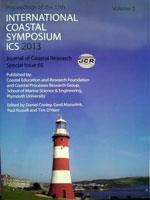Kim, C.S., Park, Y.J., Park, K.S., Shim, J.S. and Lim, H.S., 2013. Application of GOCI Satellite Data to Ocean Modeling
This study demonstrates possible application of satellite data to numerical modeling, and vice versa, to improve the quality of the processed information. A new geostationary satellite with the three missions of communication, ocean and meteorology was launched in June 2010. The ocean mission part, GOCI (The geostationary Ocean Color Imager), is now in data service of ocean color images at every hour during daytime with a spatial resolution of 500 m. The scanned data covers the north Pacific with focusing on Korean Peninsula and adjacent seas. Using the optical sensors, the GOCI images usually contain the cloud-blocked zone. We investigate a method to acquire the cloud-free images of environment information by using the operational 3-D ocean model, the ROMS. The clear-image data are used as boundary condition to the numerical modeling, and then the model results are used to recover the cloud-covered area. The hourly varying image data are also excellent data for the ocean numerical modeling in terms of temporal and spatial variation of the ocean environment. By close examination of hourly producing images from GOCI, the temporal variation is very useful for operational purpose along with the three-dimensional ocean model such as ROMS. Being in operational mode, the ROMS ocean model produces temporal and structural variation of coastal features by using the compatible GOCI data, or the GOCI images can be improved by using the model results for cloud-free images. This study shows some excellent test cases on various coastal phenomena, such as a river plume of highly turbid waters, coastal upwelling, transport of algal bloom, typhoon tracking and the distribution of surface suspended sediment concentration. A method for the convergence of GOCI data and ocean model results has been introduced. The clouding network system for the convergence of satellite data and ocean model data is a promising method that combines two different media, thus yielding dynamically validated products.





